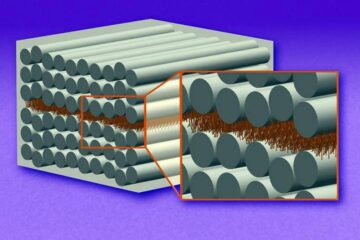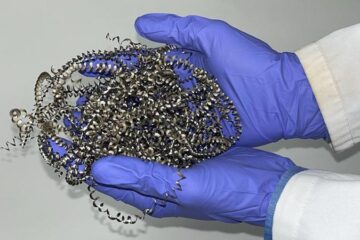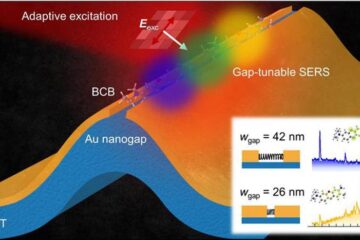Recycling of material may extend ring lifetimes

Although rings around planets like Jupiter, Saturn, Uranus and Neptune are relatively short-lived, new evidence implies that the recycling of orbiting debris can lengthen the lifetime of such rings, according to University of Colorado researchers.
Strong evidence now implies small moons near the giant planets like Saturn and Jupiter are essentially piles of rubble, said Larry Esposito, a professor at CU-Boulder’s Laboratory for Atmospheric and Space Physics. These re-constituted small bodies are the source of material for planetary rings.
Previous calculations by Esposito and LASP Research Associate Joshua Colwell showed the short lifetimes for such moons imply that the solar system is nearly at the end of the age of rings. “These philosophically unappealing results may not truly describe our solar system and the rings that may surround giant extra-solar planets,” said Esposito. “Our new calculations of models explain how inclusion of recycling can lengthen the lifetime of rings and moons.”
The observations from the Voyager and Galileo space missions showed a variety of rings surrounding each of the giant planets, including Jupiter, Saturn, Uranus and Neptune. The rings are mixed in each case with small moons.
“It is clear that the small moons not only sculpt the rings through their gravity, but are also the parents of the ring material,” said Esposito. “In each ring system, destructive processes like grinding, darkening and spreading are acting so rapidly that the rings must be much younger than the planets they circle.”
Numerical models by Esposito and Colwell from the 1990’s showed a “collisional cascade,” where a planet’s moons are broken into smaller moons when struck by asteroids or comets. The fragments then are shattered to form the particles in new rings. The rings themselves are subsequently ground to dust, which is swept away.
But according to Colwell, “Some of the fragments that make up the rings may be re-accreted instead of being ground to dust. New evidence shows some debris has accumulated into moons or moonlets rather than disappearing through collisional erosion.”
“This process has proceeded rapidly,” said Esposito. “The typical ring is younger than a few hundred million years, the blink of an eye compared to the planets, which are 4.5 billion years old. The question naturally arises why rings still exist, to be photographed in such glory by visiting human spacecraft that have arrived lately on the scene,” he said.
“The answer now likely seems to be cosmic recycling,” said Esposito. Each time a moon is destroyed by a cosmic impact, much of the material released is captured by other nearby moons. These recycled moons are essentially collections of rubble, but by recycling material through a series of small moons, the lifetime of the ring system may be longer than we initially thought.”
Esposito and former LASP Research Associate Robin Canup, now with the Southwest Research Institute’s Boulder branch, showed through computer modeling that smaller fragments can be recaptured by other moons in the system. “Without this recycling, the rings and moons are soon gone,” said Esposito.
But with more recycling, the lifetime is longer, Esposito said. With most of the material recycled, as now appears to be the case in most rings, the lifetime is extended by a large factor.
“Although the individual rings and moons we now see are ephemeral, the phenomenon persists for billions of years around Saturn,” said Esposito. “Previous calculations ignored the collective effects of the other moons in extending the persistence of rings by recapturing and recycling ring material.”
Esposito, the principal investigator on a $12 million spectrograph on the Cassini spacecraft slated to arrive at Saturn in July 2004, will look closely at the competing processes of destruction and re-capture in Saturn’s F ring to confirm and quantify this explanation. Esposito discovered the F Ring using data from NASA’s Voyager 2 mission to the outer planets launched in 1978.
Contact: Larry Esposito, 303-492- 5990, Esposito@lasp.colorado.edu
Joshua Colwell, 303-492-6805
Jim Scott, 303-492-3114
Media Contact
More Information:
http://www.colorado.edu/All latest news from the category: Physics and Astronomy
This area deals with the fundamental laws and building blocks of nature and how they interact, the properties and the behavior of matter, and research into space and time and their structures.
innovations-report provides in-depth reports and articles on subjects such as astrophysics, laser technologies, nuclear, quantum, particle and solid-state physics, nanotechnologies, planetary research and findings (Mars, Venus) and developments related to the Hubble Telescope.
Newest articles

“Nanostitches” enable lighter and tougher composite materials
In research that may lead to next-generation airplanes and spacecraft, MIT engineers used carbon nanotubes to prevent cracking in multilayered composites. To save on fuel and reduce aircraft emissions, engineers…

Trash to treasure
Researchers turn metal waste into catalyst for hydrogen. Scientists have found a way to transform metal waste into a highly efficient catalyst to make hydrogen from water, a discovery that…

Real-time detection of infectious disease viruses
… by searching for molecular fingerprinting. A research team consisting of Professor Kyoung-Duck Park and Taeyoung Moon and Huitae Joo, PhD candidates, from the Department of Physics at Pohang University…





















